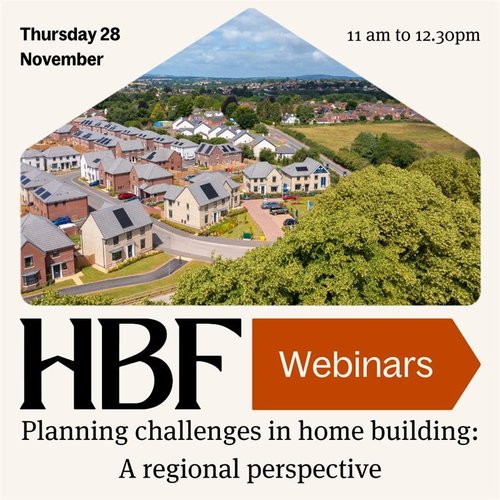BNG for home builders
Government's Biodiversity Net Gain (BNG) mandate came into force for major sites in 2024, requiring a minimum of 10% BNG on new developments in England. We are working with members and stakeholders to develop BNG guidance, and capture feedback that supports ongoing improvements.
Become a member of HBF
Find out how we can support your organisation with key issues.
Biodiversity net gain: One year on research
12 months on from the mandate's introduction, our report provides insight on the ongoing challenges for home builders,
Defra guidance for home builders
A range of resources to support BNG implementation is available on GOV.UK. This includes an overview of the mandate, steps for home builders and calculation tools.
BNG resources
Planning practice guidance
Official BNG planning practice guidance outlines further context to the mandate.
BNG Online
BNG Online, a partnership between the Planning Advisory Service and Future Homes Hub, provides support for home builders and local planning authorities.
Government resources
Guidance, tools and resources covering a range of BNG aspects is available on GOV.UK
Statutory metric tools
Discover tools and guides for measuring the biodiversity value of habitat.
Habitat management plans
Learn what to include in a long-term management and monitoring plan.
Legal agreements
Legal agreement guidance for home builders, land managers, local planning authorities and responsible bodies.
On-site gains
Find information on how home builders can create and enhance habitat to deliver on-site BNG.
Off-site gains
Learn how home builders can deliver BNG off site and buy BNG credits.
Guidance for land owners
Understand how land managers can sell biodiversity units to meet requirements.
BNG webinars
How we are representing our members
The Government is continuing its engagement with the development industry as mandatory biodiversity net gain (BNG) beds in. HBF has a key role to play in collecting and sharing feedback from members on what is working and what isn’t.
In the lead up to the mandate's introduction, HBF was a key member of the Future Homes Hub BNG preparedness group helping to shape the implementation of BNG policy as it was being brought in.
HBF supported the principal of BNG and recognises the role that new development can and should play in helping to address the nature crisis. However, the implementation of the policies and processes to deliver BNG however must not prevent the delivery of much needed homes, as to do so would undermine the Government’s growth agenda and commitment to 1.5 million new homes within this Parliament.
Now that Mandatory BNG is in place, we to feed into BNG policy and practice. We remain a key member of the FHH BNG Implementation Board and Community of Practice.

HBF member group
Our BNG Working Group meets virtually every quarter to discuss BNG updates and gather feedback on its implementation.
Got a question
To support the implementation of BNG, HBF members can submit BNG questions directly to our team.
Member Only Content
View the latest BNG updates from HBF
LoginStay in the loop
HBF members can create a free online account and sign up to receive updates on Biodiversity Net Gain.
Is BNG policy changing?
The Government recently consulted on potential changes to BNG for small and medium sites.
The consultation documents are available here (link) and the HBF response here (link).
The thresholds at which BNG requirements apply is one of the key questions of the consultation.
We have been informed that the Government will be considering the consultation responses received over the summer and preparing something for ministers to consider in ‘the autumn’.
We were also advised some of the changes proposed require secondary legislation, so there won’t be any changes to the policy in the short term.
We were also old there will be a ‘transition period’.
We have requested an official statement about the timeframe, as we are aware that the uncertainty was already causing issues.
We will notify members of any changes/updates as soon as we have them.
View our consultation response
Member Only Content
Sign in to download this resource. Or create a free online account.
Login
